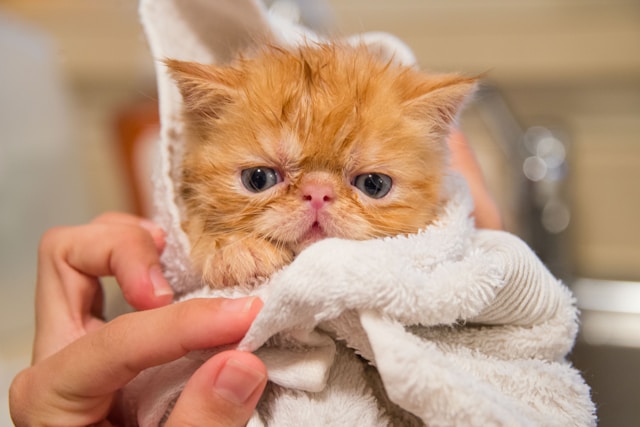Understanding Cat Sounds: What Your Cat’s Meows, Purrs, and Other Noises Mean

Cats are known for their wide array of vocalizations, which can be as varied and nuanced as their personalities. Whether it’s a soft purr or a loud yowl, each sound your cat makes has its own meaning. By learning to interpret these noises, you can better understand what your feline friend is trying to communicate. This comprehensive guide will delve into the most common cat sounds, what they signify, and how you can respond to them effectively.
The Basics of Cat Communication
Before diving into specific sounds, it’s important to recognize that cats use vocalizations, body language, and scent to communicate. While their vocalizations are the focus here, understanding these sounds within the context of their overall behavior and body language will provide a fuller picture of what your cat is trying to convey.
Common Cat Sounds and Their Meanings
1. Meows
Greeting Meows
- Description: A friendly, short meow often heard when you enter the room or when your cat is seeking attention.
- Meaning: Your cat is acknowledging your presence or asking for interaction. It’s their way of saying “Hello” or “Pay attention to me!”
Requesting Meows
- Description: Persistent or loud meows that may increase in volume and frequency.
- Meaning: Your cat is asking for something specific, such as food, access to a room, or playtime. This can sometimes be linked to hunger or boredom.
Complaint Meows
- Description: Harsh, repetitive meows that may sound distressed or impatient.
- Meaning: Your cat may be upset about something, such as a lack of food, a dirty litter box, or being left alone for too long.
2. Purring
Contentment Purring
- Description: A steady, rhythmic purring sound that occurs when your cat is relaxed.
- Meaning: Your cat is content and comfortable. Purring is often heard during petting or while your cat is lounging peacefully.
Healing Purring
- Description: Purring that can sometimes be softer and more intermittent.
- Meaning: Cats may purr when they are injured or unwell, which some believe helps them heal. It’s their way of soothing themselves.
3. Chirps and Trills
Greeting Chirps
- Description: Short, high-pitched sounds that may resemble a bird’s chirp.
- Meaning: This is often a way for your cat to greet you or other pets. It’s a friendly, positive sound.
Attention-Seeking Trills
- Description: Similar to chirps but with a more urgent tone.
- Meaning: Your cat is trying to get your attention quickly, often because they want something like food or playtime.
4. Hisses and Growls
Warning Hisses
- Description: A sharp, sibilant sound made by quickly expelling air through the mouth.
- Meaning: Your cat is feeling threatened or defensive. It’s a clear warning to stay away.
Aggressive Growls
- Description: Low, guttural sounds that may be accompanied by a defensive posture.
- Meaning: Your cat is feeling very threatened or aggressive. This sound is a prelude to potential aggression if the threat continues.
5. Yowls and Howls
Discomfort Yowls
- Description: Long, drawn-out, and often loud vocalizations.
- Meaning: This sound is typically made when a cat is in discomfort, pain, or experiencing distress. It can also be a sign of loneliness, especially if the cat is left alone for long periods.
Mating Howls
- Description: Loud, repetitive howls, especially in unspayed or unneutered cats.
- Meaning: This is usually associated with mating behaviors. It’s a vocalization to attract potential mates and can be quite persistent.
6. Silent Signals
Body Language Accompanied by Silence
- Description: Sometimes, cats use their bodies rather than vocalizations to communicate.
- Meaning: Observe their tails, ears, and posture. For example, a raised tail often means a happy or confident cat, while a lowered tail indicates fear or submission.
Interpreting and Responding to Cat Sounds
Understanding Context
The context in which your cat makes these sounds is crucial. For instance, a cat might purr while eating or while being petted, but a purr when they’re in a different situation might indicate discomfort or illness. Always consider the environment and situation to interpret the sound correctly.
When to Seek Help
If your cat is making sounds that are unusual for them, especially if they seem distressed, it may be wise to consult a veterinarian. Sudden changes in vocalizations can sometimes indicate health problems or stress.
Bonding Through Communication
Responding appropriately to your cat’s sounds can strengthen your bond. For example, if your cat meows for attention and you respond with petting or playtime, they learn that their vocalizations are an effective way to communicate with you.
Conclusion
Understanding your cat’s sounds can significantly enhance your relationship with them. By paying attention to the different types of vocalizations and the contexts in which they occur, you can better meet your cat’s needs and ensure they are happy and healthy. Remember, each cat is unique, so while these general guidelines can help, your own observations will be invaluable in understanding your feline friend’s specific communications.
By learning and interpreting your cat’s meows, purrs, and other noises, you’ll be better equipped to respond to their needs and build a stronger, more empathetic relationship with your beloved pet.




